Stamford
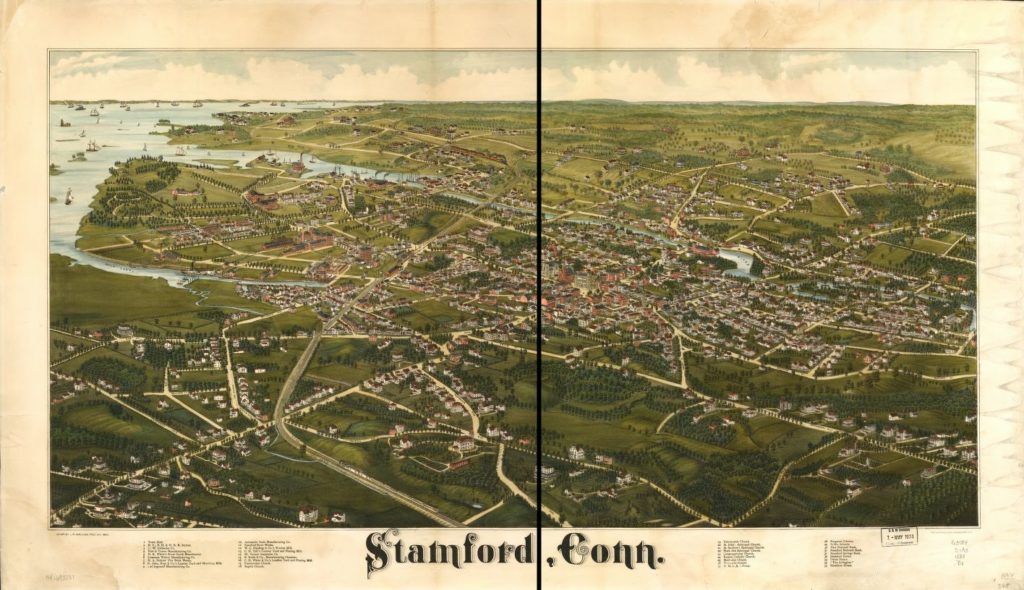
Stamford, 1883. Library of Congress
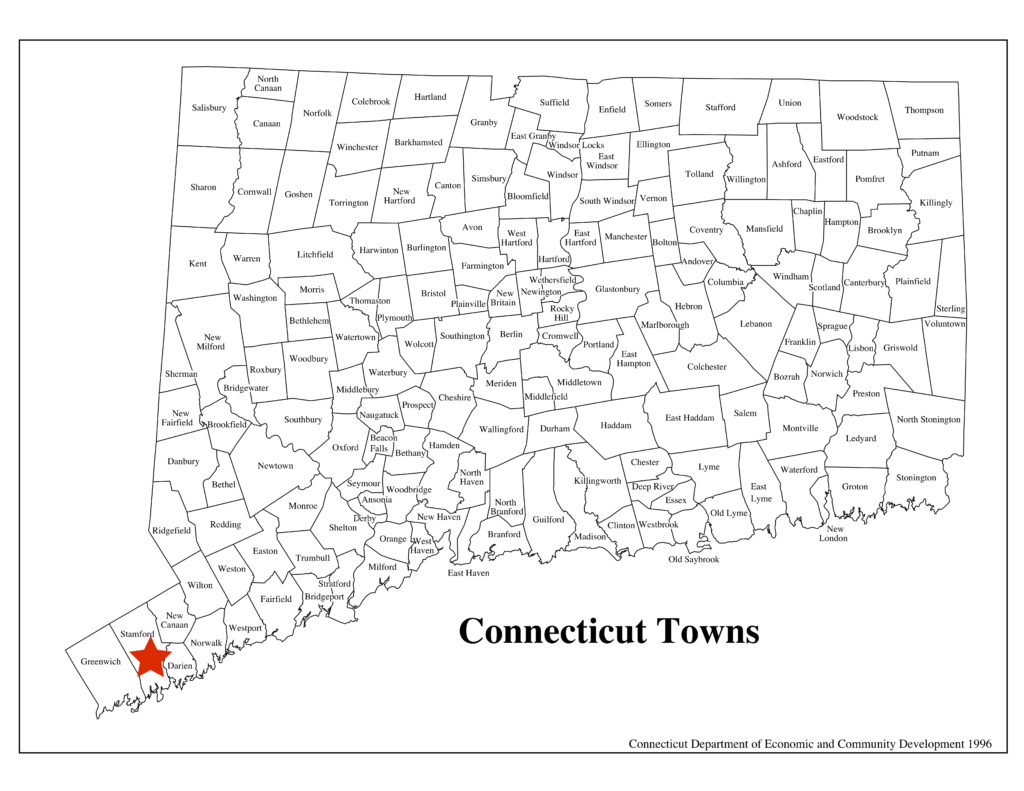
Stamford is on Long Island Sound. It was settled by a group of English families from Wethersfield. They were invited to move there by New Haven leader John Davenport. In 1640 he purchased the land from Chief Ponus of the Sinawoy Indians.
The settlers farmed. By the American Revolution, Stamford had grown into a market town. Farmers grew potatoes, wheat, corn, rye, and oats. They raised livestock. The food they didn’t need themselves, they sold in New York City. The harbor made it easy to ship crops to New York.
Many changes came to Stamford after 1800. The town of New Canaan split off from Stamford in 1801. Darien split off from Stamford in 1820.
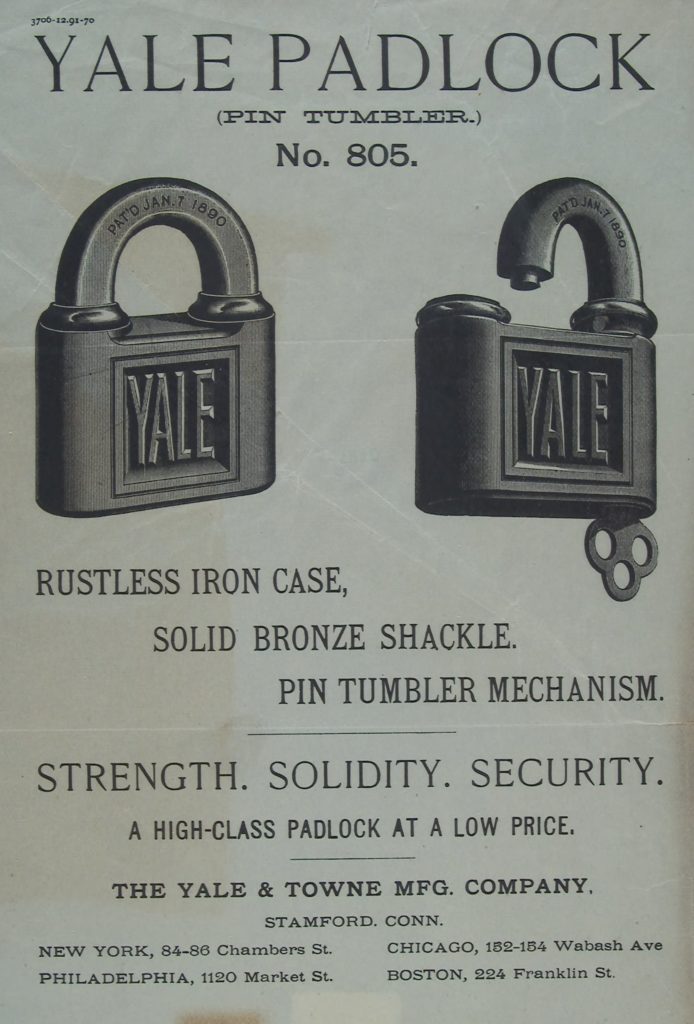
Yale & Towne advertisement, c. 1890. Library of the Connecticut Historical Society
In 1833 a canal was built from the harbor to the center of town. The railroad arrived in 1848. Stamford became a manufacturing center. It became a city with many factories. Early industries made dyes, cast-iron stoves, and milled lumber.
Yale and Towne Manufacturing Company made locks. By 1892 Yale and Towne employed 1,000 people. Other factories made typewriters, wallcovering, hats, carriages and more.
As with other places in Connecticut, immigrants came to find work. The first immigrants came from Ireland. Later in the 1800s, immigrants arrived from Germany and other countries in Europe. Stamford became a city in 1893.
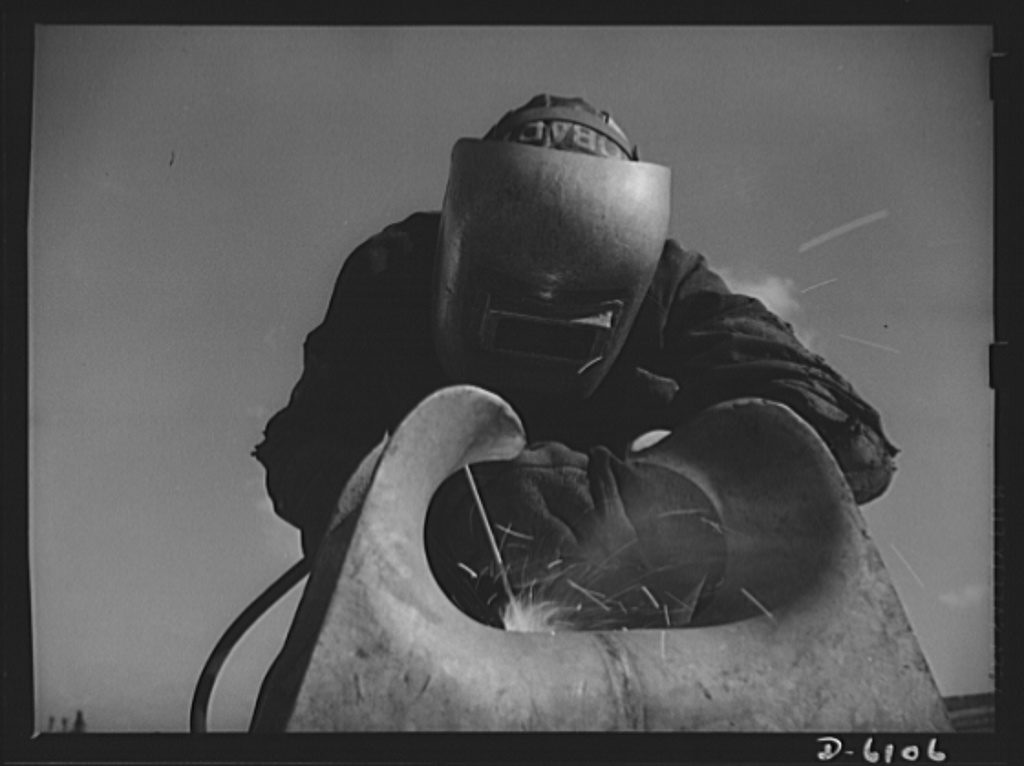
Welder working on a submarine chaser in Stamford during World War II. Library of Congress
After 1900 Stamford grew and added more factories. Pitney Bowes became the largest maker of postage meters.
Immigrants from Europe continued to arrive. They were joined by African Americans from the southern United States seeking better jobs in northern cities.
Being near New York City helped Stamford’s economy. Wealthy New Yorkers built summer homes on the seashore.
Baseball great Jackie Robinson moved to North Stamford in 1954. When he retired from baseball, he worked for civil rights until his death in 1972.
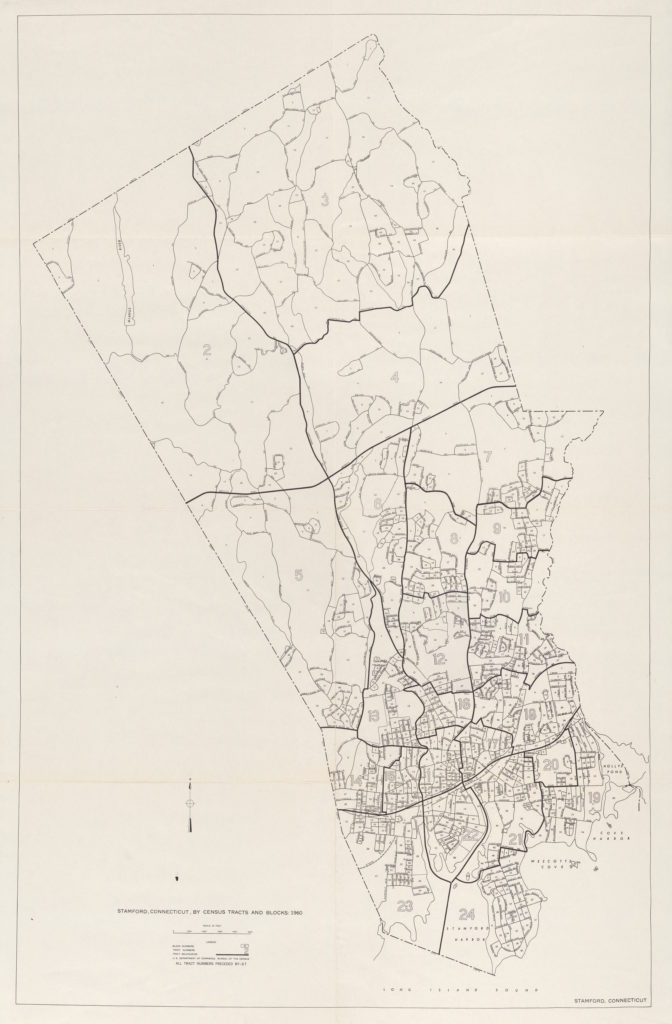
Stamford 1960. US Census
In the 1950s factories closed and moved away. In the 1960s and 1970s companies moved their headquarters from New York to Stamford. They built tall office buildings in the city center.
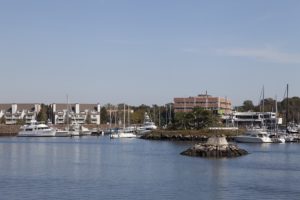
Stamford. photo: Carol M. Highsmith, Library of Congress
The 2015 census data shows Stamford’s population is growing. Stamford may now be the third largest city in Connecticut, edging out Hartford.
Read about Jackie Robinson in Where I Live: Connecticut, chapter 5.
Stamford’s original town green is now Veteran’s Park. It was called Central Park in the 1930s.
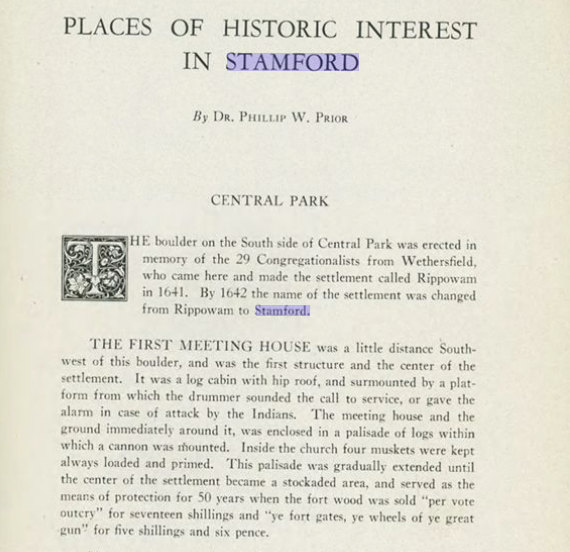
Connecticut Tercentenary pamphlet. This was written in 1935 to celebrate the 300th anniversary of Connecticut








